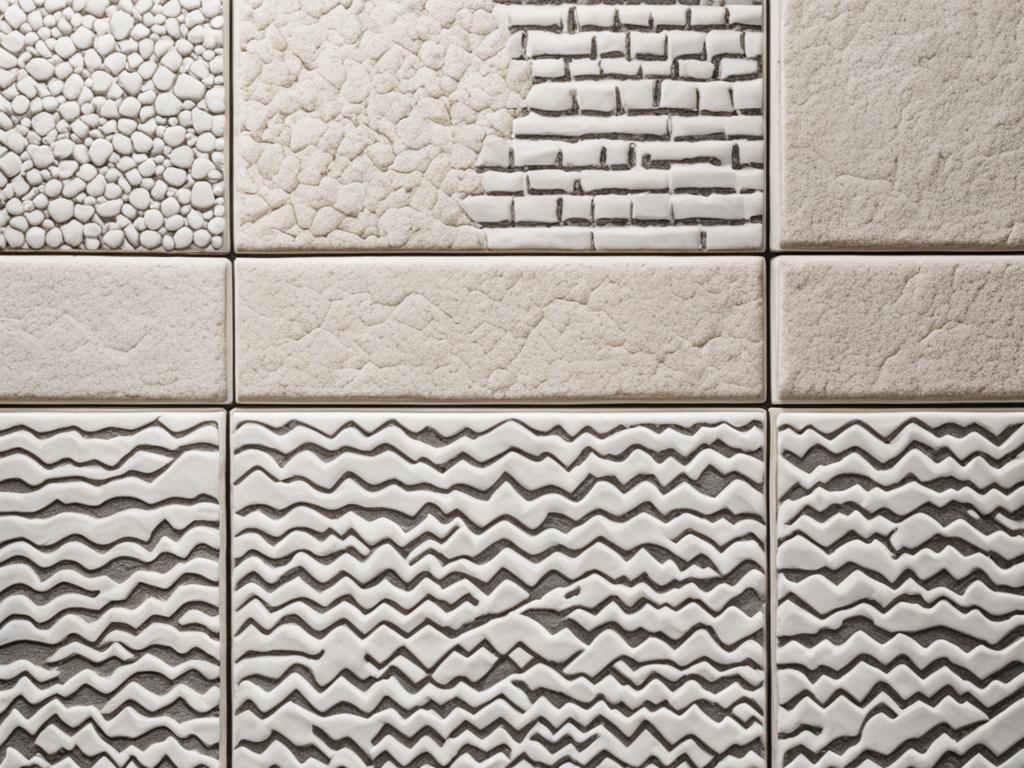Grout lines are a crucial aspect of tile installation, influencing both the look and durability of the finished project. When it comes to comparing 1/8 vs 3/16 grout lines, there are several factors to consider, including tile size, material, and personal preference. In this article, we will explore the differences between these two options and provide valuable insights to help you make an informed decision for your tile spacing.
Key Takeaways:
- 1/8-inch grout lines are often recommended for beginners or those looking to hide imperfections in the tiles.
- 3/16-inch grout lines can create a more modern and sleek look, but require more experience and precision during installation.
- The optimal grout line width depends on factors such as tile size, type, and location.
- Consider the pros and cons of each grout line width before making a decision.
- Consult with professionals if needed to ensure the best outcome for your tile installation.
Factors to Consider When Choosing Grout Line Width
When deciding between a 1/8 and 3/16 grout line, there are several factors to consider. The size and type of tiles being used, whether they are handmade or uniform in size, can influence the optimal grout line width. Handmade tiles, for example, may have irregularities that require larger grout joints. Additionally, the location of the installation, such as floors or walls, can also impact the recommended grout line width. Smaller tiles may benefit from a narrower grout line to accentuate their size and variation, while larger tiles may require wider grout lines for better traction and stability.

Grout Line Width Recommendations for Different Tile Sizes
| Tile Size | Recommended Grout Line Width |
|---|---|
| Small (less than 4 inches) | Narrow (1/8 inch) |
| Medium (4 to 8 inches) | Medium (1/8 to 3/16 inch) |
| Large (8 inches or more) | Wide (3/16 inch or larger) |
Pros and Cons of Different Grout Line Widths
When it comes to choosing the right grout line width for your tile installation, there are two popular options to consider: the 1/8-inch grout line and the 3/16-inch grout line. Each option has its own pros and cons, and understanding them can help you make an informed decision.
1/8-Inch Grout Line: Pros and Cons
The 1/8-inch grout line offers several advantages. First, it is less noticeable and can create a cleaner, more seamless look, making it a popular choice for those who prefer a more minimalistic aesthetic. Additionally, the narrow width of the grout line can help hide small imperfections in the tiles, providing a forgiving finish.
However, there are a few disadvantages to consider as well. Installing a 1/8-inch grout line accurately requires precision and attention to detail, which can make the installation process more time-consuming. It may also be more challenging to achieve consistent spacing between tiles, particularly for beginners or those with limited experience.
3/16-Inch Grout Line: Pros and Cons
On the other hand, a 3/16-inch grout line offers its own set of advantages. The wider grout line can create a more modern and sleek appearance, especially when paired with large-format tiles. It can also help highlight the individual tiles and their unique characteristics, adding visual interest to the overall design.
However, there are a few drawbacks to keep in mind. The wider grout line may be more difficult to install precisely, requiring a higher level of skill and expertise. It can also be more challenging to clean and maintain, as dirt and grime can accumulate more easily in the wider gaps.
Ultimately, the choice between a 1/8-inch and a 3/16-inch grout line depends on your specific needs and preferences. Consider factors such as your skill level, desired aesthetic, and the requirements of your tile project. Consulting with a professional can also provide valuable insights and guidance.

To summarize, here are the pros and cons of the 1/8-inch and 3/16-inch grout lines:
| 1/8-Inch Grout Line | 3/16-Inch Grout Line |
|---|---|
| Pros | Pros |
| – Less noticeable | – Modern and sleek appearance |
| – Hides imperfections | – Highlights tile characteristics |
| Cons | Cons |
| – More time-consuming installation | – More challenging installation |
| – Requires precision | – Difficult to clean and maintain |
By considering these factors and weighing the pros and cons, you can make an informed decision that best suits your tile installation project.
Conclusion
In conclusion, when it comes to choosing the optimal grout line for your tile installation, there are several factors to consider. The decision between a 1/8-inch and 3/16-inch grout line depends on the tile size, type, location, and your personal aesthetic preference.
If you are a beginner or looking to hide imperfections in the tiles, a 1/8-inch grout line is often recommended. This smaller grout line can make mistakes less noticeable and create a cleaner look. However, it may require more precision and time during installation.
On the other hand, if you want a more modern and sleek appearance, a 3/16-inch grout line can achieve that effect. It can add a contemporary touch to your tile project. However, keep in mind that a larger grout line may require more expertise and careful installation.
Ultimately, the right grout line width depends on your specific project requirements and personal taste. It’s always a good idea to consult with professionals if needed to ensure you choose the optimal grout line for your tile installation. By considering all these factors, you can achieve an aesthetically pleasing and durable result.
